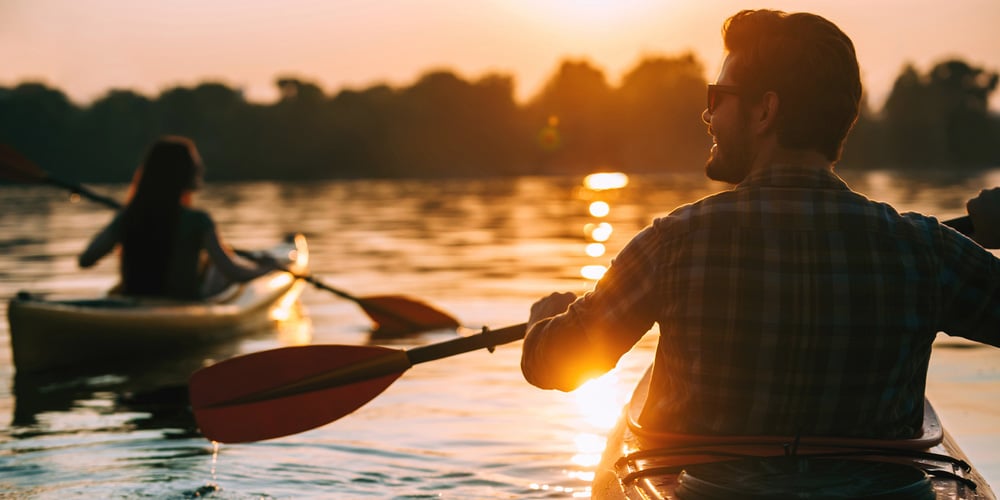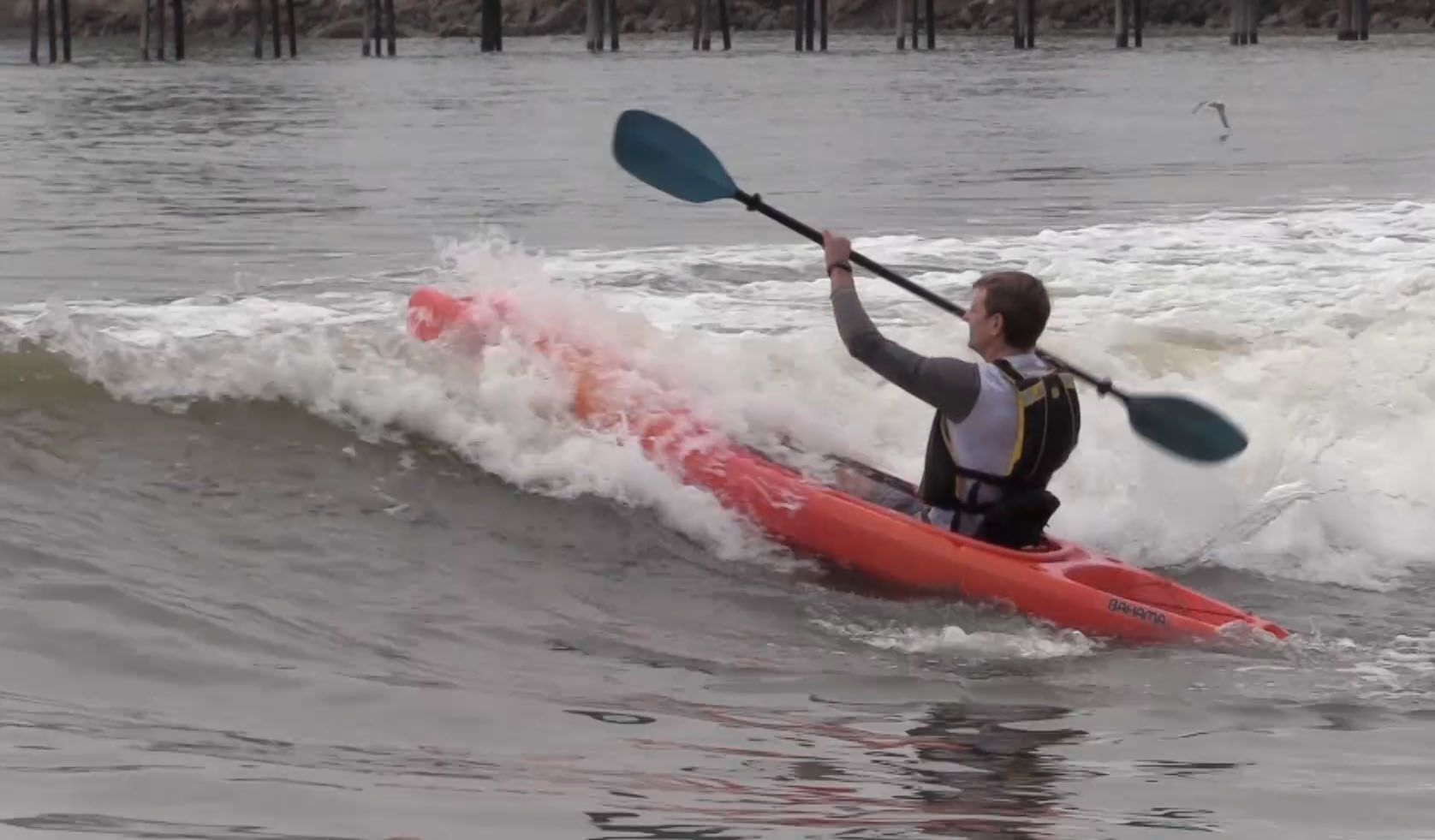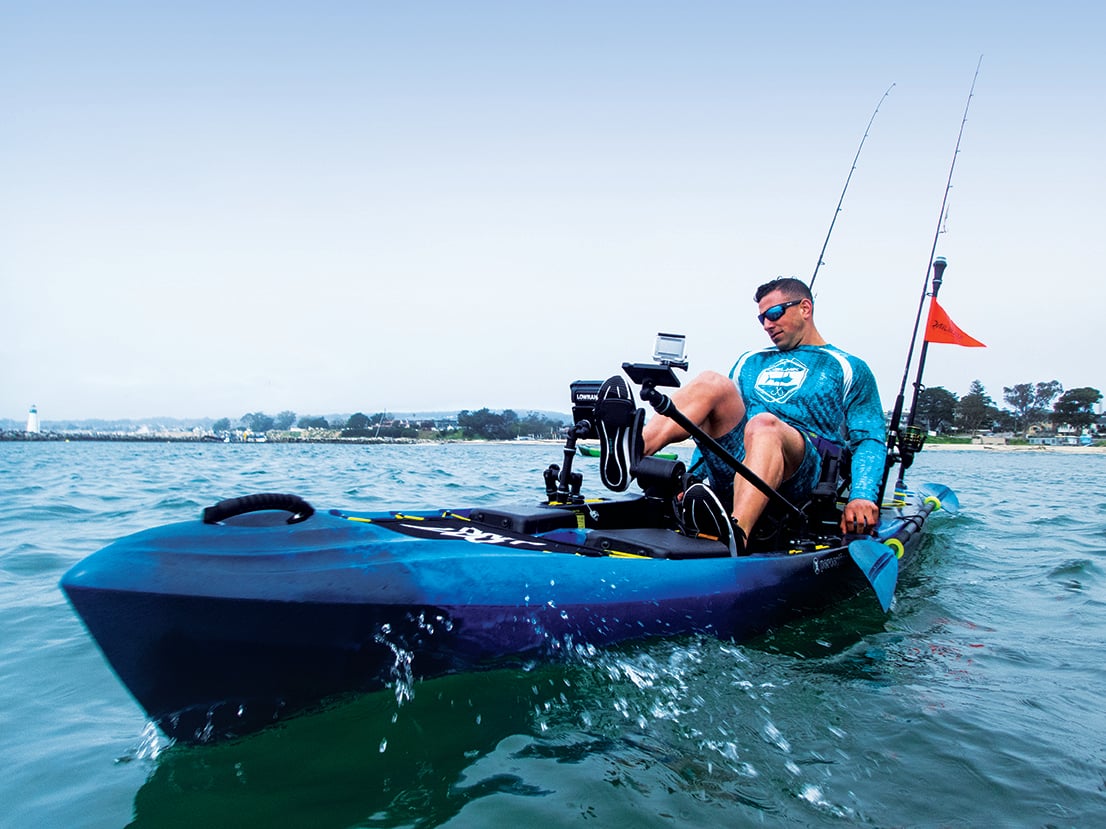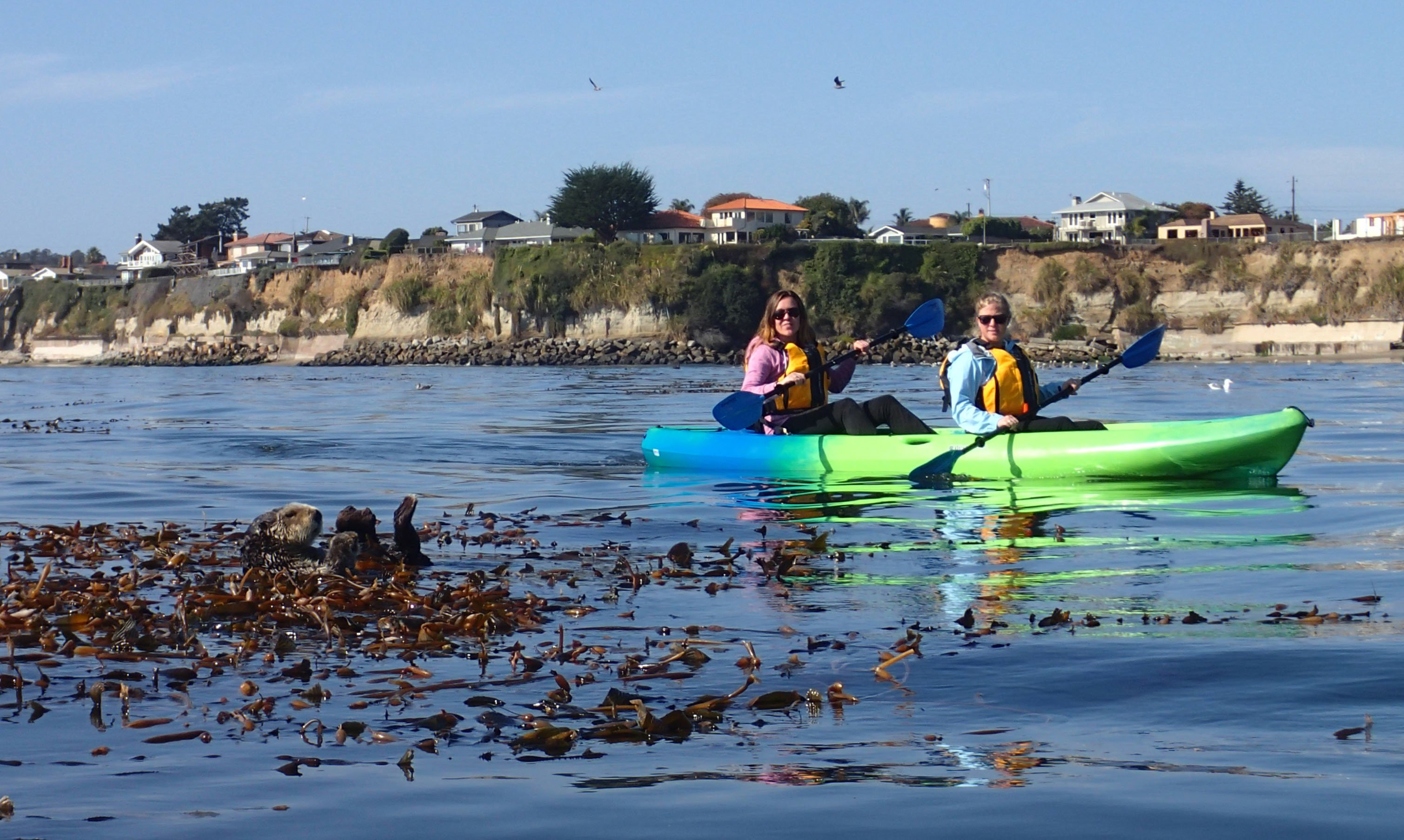
If you have resolved to get into shape, consider paddling your way to fitness on a kayak. The physical benefits of kayaking include core conditioning, increased aerobic capacity and weight loss. The psychological and social benefits include stress reduction and the enjoyment of making new friends among the world’s growing armada of paddling fanatics.
The Health Benefits of Kayaking
Core Conditioning


There are lots of muscle groups that get a workout on a kayak.
Paddling a kayak helps to strengthen your “core” muscle groups, which are the major muscles of your trunk that move, support and stabilize your spine. The small, but constant muscle movements required to balance in a kayak, along with the rotational movement of paddling work together to build core strength.
With repeated paddling excursions, your core muscle groups will progressively strengthen—along with your abilities as a kayaker. Core conditioning also offers off-the-water benefits. For example, lifting a heavy object, reaching down or reaching up to a shelf all become easier when your core muscle groups are strong. Kayaking is also a great way to exercise your back, arms and shoulders muscles with the added benefit of getting outside to enjoy some fresh air in the process.
Aerobic fitness
The constant exertion required to paddle a kayak increases a paddler’s respiration rate, which over time can help improve the ability of his or her lungs, heart and vascular system to deliver oxygen to muscles via the blood. The benefits of being aerobically fit include improved endurance, decision-making capability, concentration and mental alertness.
Lose weight
Will paddling a kayak help you to lose weight? The answer is yes. According to Men’s Fitness, paddling a kayak burns about 205 calories per hour, depending on conditions. And according to the Mayo Clinic, one pound of body weight equals about 3,500 calories—so provided you adhere to a regular program of paddling exercise and watch your caloric intake, you will slowly but surely burn away those pounds! To increase the burn, paddle against the wind and current.
Stress less
Legions of paddlers have discovered that shoving off in a kayak onto their favorite lake or river is a great way to break with the stress of daily life and enjoy our natural world. Evidence of this can be seen in a random sampling of quotes posted by kayakers at pinterest.com: “If in doubt, paddle out”, “A day on the lake restores the soul” and “I don’t need therapy, I just need to go kayaking”.
Friends and family

Kayakers can see wildlife up close, but don't get too close! These folks may be too near to the cute, furry sea otter. Sea Otter Savvy offers some guidelines so you won't stress-out our animal friends.
Due to the tremendous popularity of kayaking, most areas near the water have some sort of paddling club—so you can get healthy and fit while making new friends. And of course, kayaking is a sport that the whole family can enjoy. Plus, with plenty of tandem kayaks on the market it's easy to double up with a partner or a young kid that may not be ready to handle a kayak on their own.
Gear requirements
If you don’t have a kayak already, there are plenty from which to choose. Choices include sit-on-top kayaks, sit-inside kayaks, and inflatable kayaks, each with its own unique set of features. Along with a kayak, you will also need a paddle. For help in selecting a paddle, see Select the Right Kayak Paddle for You.
Besides your kayak, you will also need to gear up for a safe time on the water. First and foremost, you will need a paddlesports life jacket, one that’s designed for paddling and that won’t hinder your paddling range of motion. And if you think you might be paddling out of shouting distance from shore, we suggest you equip yourself with a handheld VHF radio.
For some kayakers, the most difficult part of the sport is raising their kayak on to a vehicle’s kayak rack or carrying the kayak from their car to the beach. The kayak accessories that we offer include special carts and hoisting systems to make loading or manually transporting your kayak easier.
Other items to consider are a small set of pyrotechnic signals (flares) and a basic first aid kit, which should include lip balm and a topically applied sun shield. The first aid kit and other odds and ends should be kept in a dry bag.
For more information on the gear you will need, and/or if you are new to the sport, see our Beginners’ Guide to Kayaking.
Know your limits
If you are new to kayaking, we suggest that you gently ease into the sport, being careful not to exceed your physical limits. If you have a medical condition that might limit your ability to participate in kayaking, check with your doctor. Beyond the exercise and physical conditioning that paddling a kayak affords, the basics can be learned in a day or two. After that, you can continue to improve as you paddle on into the years.
Related: Kayak Safety Checklist